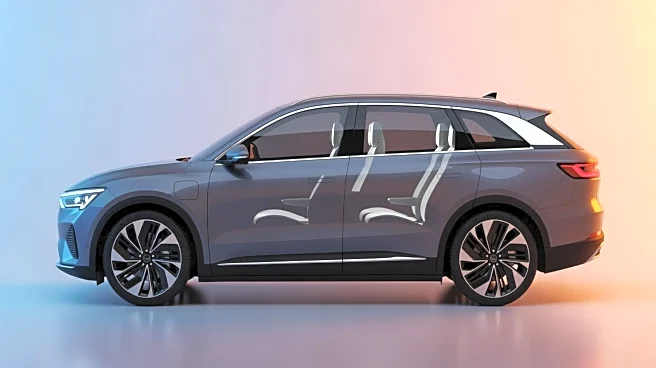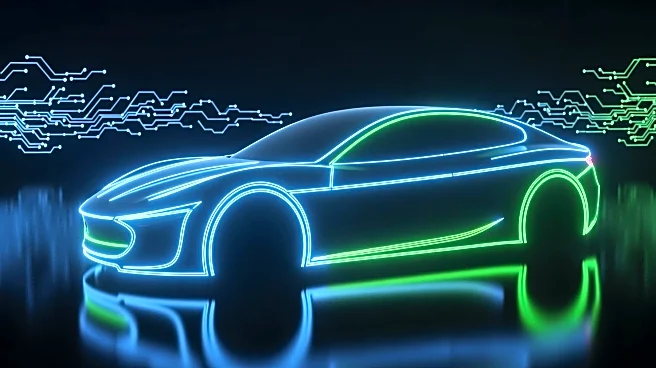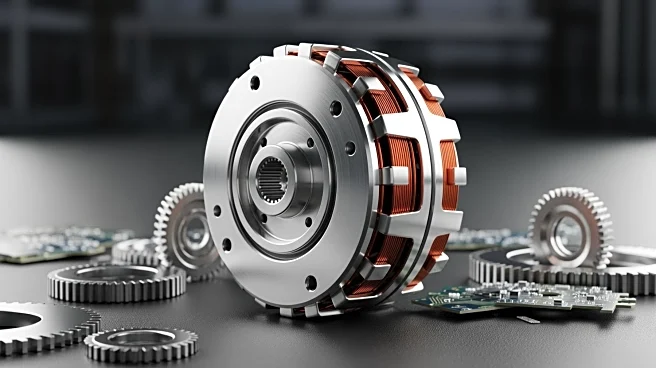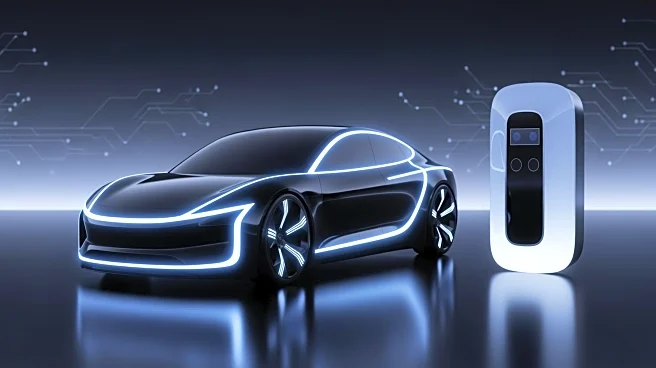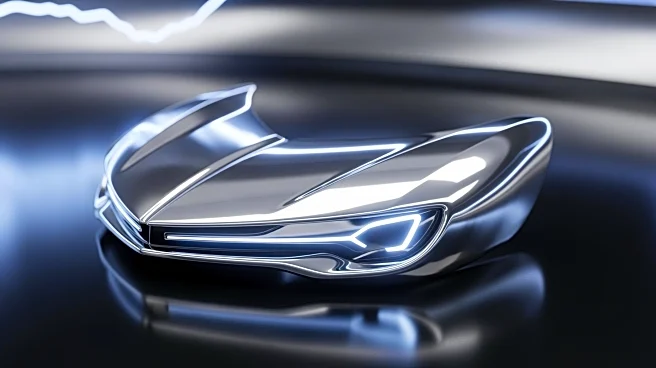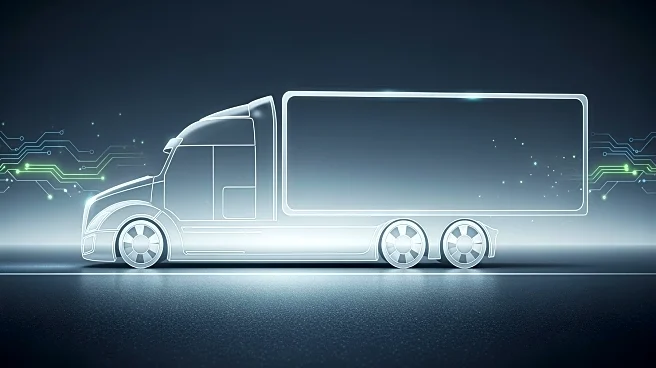What's Happening?
Nissan is set to debut its new 3-row Rogue Plug-in Hybrid Electric Vehicle (PHEV) in January, as the automotive industry faces pressure from the impending phase-out of electric vehicle incentives. The Rogue PHEV, based on the Mitsubishi Outlander PHEV, features
a 2.4-liter four-cylinder engine, dual electric motors, and a 20-kilowatt-hour battery pack. This launch comes at a time when EV registrations surged by 51% in September due to a scramble for tax credits, highlighting the industry's reliance on such incentives to boost sales. Nissan's strategic move aims to capture market interest as consumers seek alternatives amidst changing incentive structures.
Why It's Important?
The introduction of the Rogue PHEV is significant as it represents Nissan's adaptation to the evolving landscape of electric vehicle incentives. With the phase-out of these incentives, automakers are under pressure to innovate and offer attractive alternatives to maintain sales momentum. The Rogue PHEV's launch could influence consumer preferences, potentially driving demand for hybrid models that offer both electric and traditional power sources. This shift may impact the broader automotive market, encouraging other manufacturers to explore similar hybrid solutions to address the changing regulatory environment and consumer expectations.
What's Next?
As the EV incentive phase-out progresses, automakers like Nissan may need to further innovate to maintain competitiveness. The success of the Rogue PHEV could prompt Nissan to expand its hybrid offerings, potentially influencing industry trends towards more diverse powertrain options. Additionally, consumer response to the Rogue PHEV will likely inform Nissan's future product strategies, as well as those of other manufacturers facing similar challenges. Stakeholders, including policymakers and industry leaders, will be closely monitoring these developments to assess the impact on the automotive market and potential regulatory adjustments.
